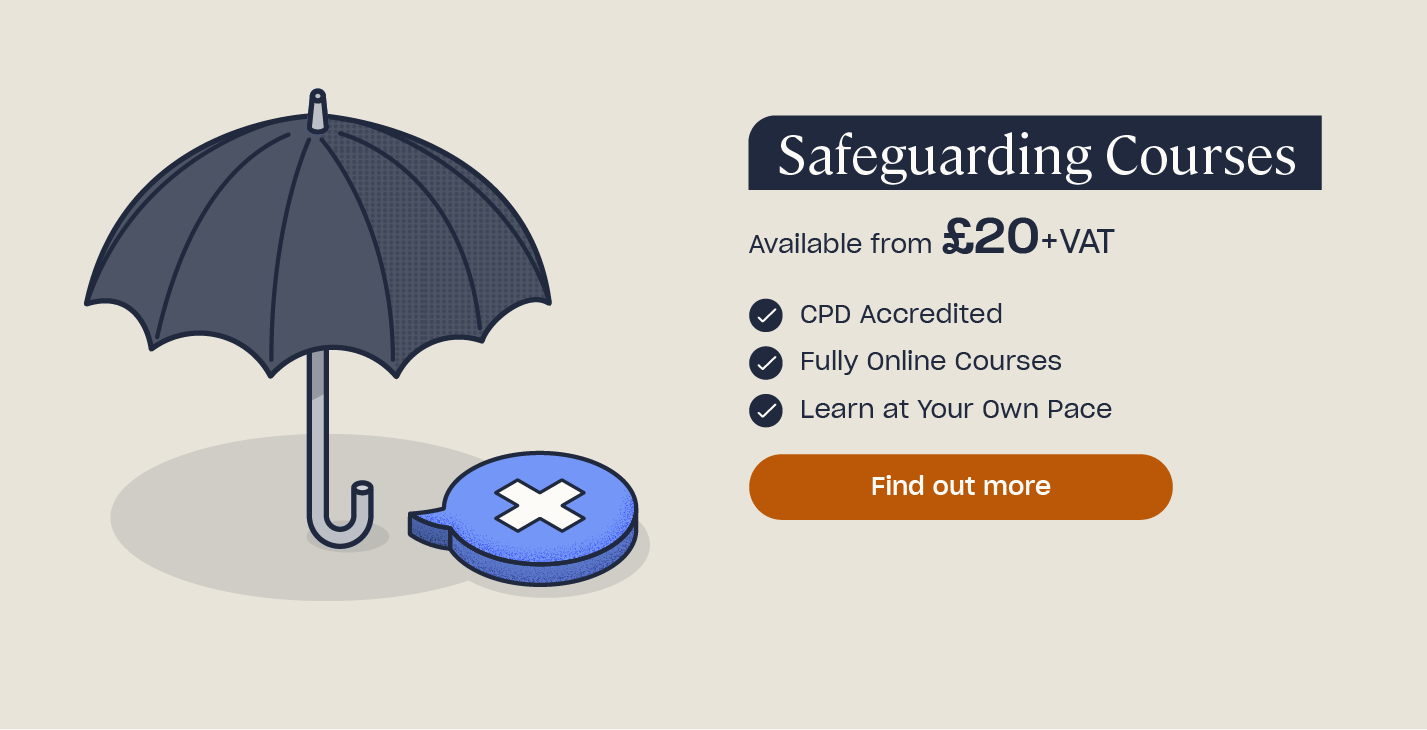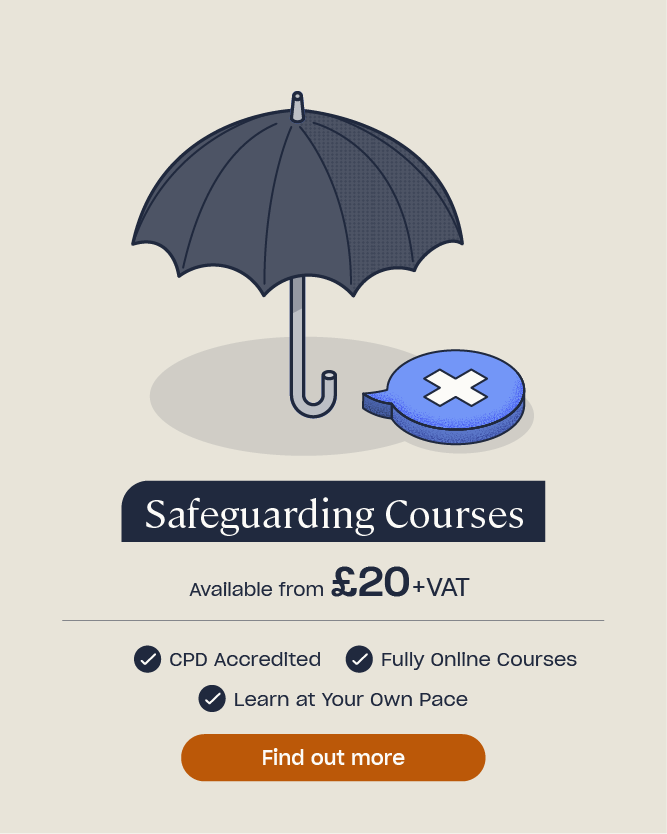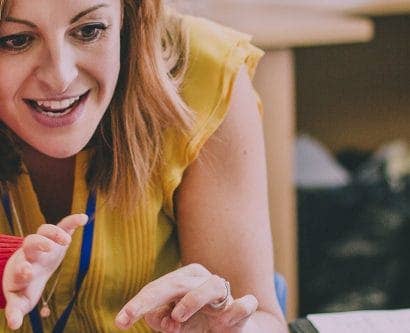Multi-Agency Working in Safeguarding
When safeguarding both children and adults, it’s vital to look at the whole picture. An individual might be facing risks at home, in school, online or elsewhere, and effective safeguarding means recognising how these areas connect and impact each other. By bringing together professionals from different services and sectors (multi-agencies), you can better identify concerns, take more informed action and give the right kind of support. In this article, we’ll outline what multi-agency working means, highlight the benefits and challenges of multi-agency working and provide you with guidance on how to ensure that your approach is effective.
What is Multi-Agency Working?
Multi-agency working is when professionals from different organisations and sectors come together to safeguard and support children, young people or adults at risk. It involves regular communication, information sharing and coordinated action between services such as health, education, police and social care.
A multi-agency approach is central to safeguarding in the UK and is built into key statutory guidance, such as Working Together to Safeguard Children. Effective information sharing, communication and working together are essential for keeping people safe from harm.
Multi-Agency Working Examples
Each organisation, sector and service brings its own expertise and viewpoint to a situation and, when these are combined, they create a fuller understanding of a person’s needs and risks. It’s often only when all of these different viewpoints come together that an individual’s true needs and level of concern are known. No decision should ever be one-sided.

For example, multi-agency working in safeguarding might involve:
- Schools and early years settings, who may notice changes in behaviour or signs of neglect.
- Social workers, who can assess the family situation and provide support.
- The police, who can investigate any criminal offences, such as abuse or exploitation.
- GPs and health visitors, who are able to identify or verify physical or mental health concerns.
- Youth offending teams, who work specifically with young people at risk of offending.
- Housing officers or homelessness teams, who can identify people in unsafe or unstable living conditions.
- Charities or voluntary services, who may offer additional support or advocacy.
Benefits of Multi-Agency Working
When done well, multi-agency working can significantly improve safeguarding outcomes, which is something that everyone who works with children or adults should be striving for. Some key benefits of multi-agency working include:
- Earlier identification of concerns – different services may notice different warning signs, and sharing this information can lead to earlier and more effective intervention.
- Holistic support – by working together, professionals can offer joined-up support that addresses a person’s wider needs, not just one issue in isolation.
- Improved services – collaboration can lead to better problem-solving and more efficient use of resources.
- Stronger relationships – regularly working together builds trust and understanding between professionals, helping everyone to work more effectively as a team.
- Reduced risk of harm – by pooling knowledge and acting together, agencies can intervene quickly to prevent further abuse, neglect or exploitation.
Want to Learn More?
Anyone who works with children, young people or adults with additional needs must have a thorough understanding of their safeguarding responsibilities. Our range of online Safeguarding Courses are created with sector specialists to bring you the latest safeguarding guidance and knowledge.
Challenges of Multi-Agency Working
Despite the benefits, multi-agency working isn’t always straightforward and there are several challenges to be aware of. To overcome these challenges, clear procedures, thorough training and a shared understanding of roles and responsibilities are essential. Challenges of multi-agency working can include:
- Different priorities and perspectives – professionals from different backgrounds may view situations in different ways or have competing goals.
- Communication barriers – industry jargon, assumptions or lack of clarity can lead to misunderstandings or delays.
- Information sharing concerns – knowing when and how to share information lawfully and responsibly can be confusing, especially when dealing with sensitive personal data and issues of confidentiality.
- Role clarity – professionals may not always be clear on who is responsible for what, which can lead to gaps in support.
- Time and workload pressures – attending meetings, following up actions and maintaining communication all take time, which can be hard to manage alongside day-to-day responsibilities.

How to Make Multi-Agency Working in Safeguarding Effective
To make multi-agency working successful, it’s important to take a thoughtful and well-organised approach. Ultimately, multi-agency working is about partnership and it relies on professionals valuing each other’s contributions, working openly and maintaining a shared commitment to keeping people safe.
To make multi-agency working effective:
- Put the individual at the centre – every decision should be made in the best interests of the person at risk, whether that’s a child or an adult.
- Build strong relationships – strong working relationships across sectors and services supports better communication and increased trust.
- Be clear about roles – everyone involved should understand their responsibilities and how they contribute to the wider safeguarding picture.
- Share information appropriately – don’t wait until a situation reaches crisis point, as sharing information early can and does prevent harm. Make sure all sharing is necessary, proportionate and lawful under UK data protection laws.
- Use formal structures – multi-agency safeguarding hubs (MASH), team-around-the-child (TAC) meetings and child protection conferences all offer clear processes for joint working.
- Regularly review and reflect – learn from experience, practice and mistakes, then adjust the approach from what has been learnt, to improve outcomes over time.
- Support ongoing learning – regular training and development help professionals stay informed about safeguarding law, guidance and best practice.

Multi-agency working is a vital part of effective safeguarding, allowing professionals to share knowledge, coordinate support and respond to concerns in a more united way. A collaborative approach to safeguarding that puts the individual first can lead to better outcomes and reduced risk of harm. With the right training, clear communication and shared commitment, multi-agency working can make a real difference to the lives of those at risk.











